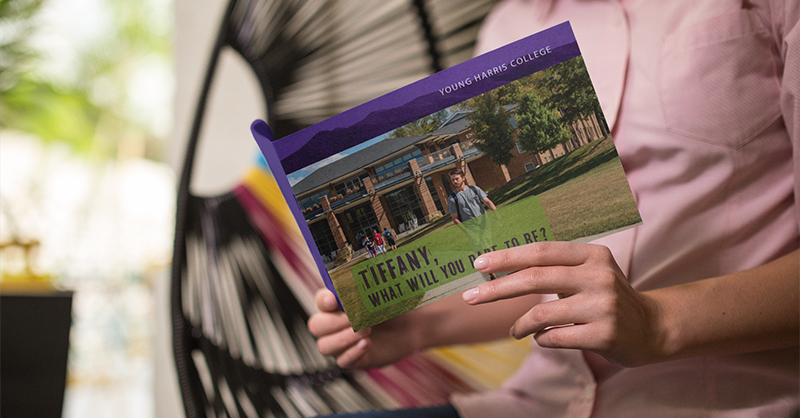Once upon a time, the viewbook was the star of admissions publications. It functioned as The Complete Guide to Your Institution for Prospective Students, describing every academic program, athletic team, student organization, facility and support service on campus in great detail. Viewbooks were costly to produce, difficult to store and often outdated almost as soon as they were printed.
Like many longtime admissions professionals, Mondy Brewer, Ph.D., VP of Enrollment Management for Lubbock Christian University, remembers those days. “I worked on building the viewbook with the marketing department for months. They’d come in on pallets, I’d struggle to find a place to put them all and then we’d end up throwing a bunch away,” he said. At the time, students typically applied to one or two schools.
Standing out from the crowd
Most of today’s students apply to multiple programs, with some searchers submitting 10 or more applications. “You have to personalize to get their attention,” said Brewer. Now, instead of responding to inquiries with a 35-page viewbook packed with information on everything Lubbock has to offer, the University creates a personalized microsite for each student that serves up relevant information based on their interests. While the PURL page serves as an immediate inquiry response, the school follows up via direct mail the next day to keep the conversation going. A trifold brochure customized with the student’s name features copy and images aligned with their interests.

Creating a comprehensive communications plan
At Lubbock, personalization isn’t just about a student’s interests — it’s also about their stage in the admissions process. Different messages go to high school sophomores, juniors and seniors. As a student progresses from inquiry to applicant to accepted to enrolled, they see different content and checklists on the PURL and receive different emails and direct mail pieces. Parents have a separate communication track as well. Blending print, email, web and other channels gives students a comprehensive view of the school in a more engaging way than the hefty viewbook of years past.
Moving to a dynamic, on-demand print model
While many schools may question the cost of moving to a more personalized print on demand program, most who have made the shift have found it either budget neutral — or even less expensive — than their previous print efforts with a higher return. Sending shorter, more relevant pieces to a smaller audience can deliver savings that can be reallocated. “You might find you saved enough money in your print budget to be able to add other channels you’re not currently using,” Brewer said.
To learn more about the ways schools are rethinking viewbooks and admissions communications, watch the on-demand webinar The Future of Viewbooks: In Print, Online and Beyond!